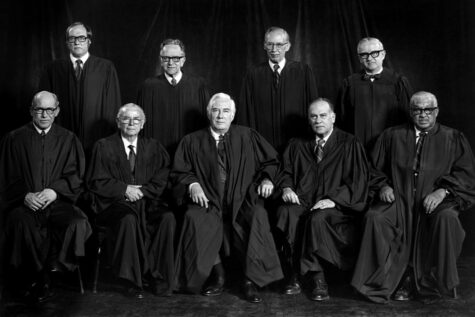Trump Signs New Executive Order on Immigration
March 9, 2017
President Trump signed an executive order halting both immigration and refugee resettlement from seven Muslim majority nations Monday.
The order, released March 6th, is a 90 day travel ban on all immigration from: Iran, Iraq, Libya, Somalia, Sudan, Syria, and Yemen.
In a substantive change, Iraq is no longer included in the new executive order. According to the New York Times, Defense Secretary Jim Mattis said including Iraq on the list would make an alliance to defeat ISIS more difficult.
Additionally, current visa holders and “green card” permanent residents from these six countries are exempt. Other exemptions include: those with dual citizenship or a diplomatic visa, and those already granted asylum.
It also reversed an indefinite ban on Syrian refugees, replacing it with a 120 day freeze. The delay, refugee advocates say, will only harm the innocent. According to progressive public policy think tank The Center for American Progress, refugees often only have a 60 day window when all of their clearances align. The entire application process, which can take two years to complete, would have to be restarted for those affected by the executive order.
Trump's 120 day pause will hurt vulnerable refugees #MuslimBan2 pic.twitter.com/h7h7lJRcNl
— American Progress (@amprog) March 6, 2017
A chart from The Center for American Progress illustrates the brief 60 day window when refugees clearances align. Immigration advocates worry that the new executive order will push back the application process by year for most refugees.
This executive order will go into force March 16, 2017, 10 days after it was signed. The previous immigration ban was enforced immediately.
Trump has also made clear the list is not set in stone, and more nations may be added. The order directs the Departments of State and Homeland Security as well as all US intelligence agencies to “determine which countries come up short on cooperating with U.S. immigration officials who are vetting travelers who want to enter the country,” according to the LA Times. The first list of countries that fall short will be delivered to the president in early April. Countries on the list will have until late May to rectify their shortcoming.
For refugees, the new order is strict. As in the previous iteration, refugees are barred from immigrating to the US for 120 days. Additionally, Trump also plans to cut the amount of refugees let into the USA in half this year.
“I hereby proclaim,” the order states, “that the entry of more than 50,000 refugees in fiscal year 2017 would be detrimental to the interests of the United States, and thus suspend any entries in excess of that number until such time as I determine that additional entries would be in the national interest.”
The order also removes the permanent ban on Syrian refugee immigration and the religious exemptions for Christian refugees.
In an interview with The Atlantic, Harvard University constitutional law professor, Laurence Tribe, noted some legal avenues for the challenge remain.
“Some of the challenges to the initial order would be blunted by the changes reflected in the newly issued travel ban,” Tribe said, “but the most fundamental constitutional infirmities in the original ban, stemming from its grounding in anti-Muslim sentiment rather than in any rational assessment of danger, all remain.”


